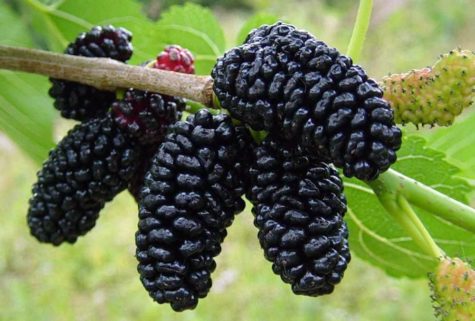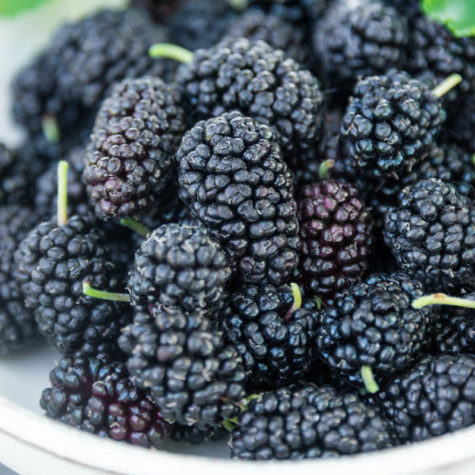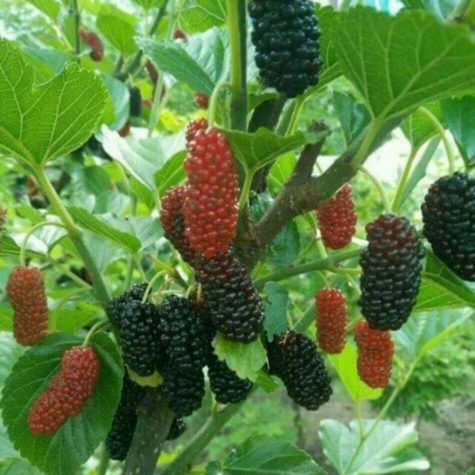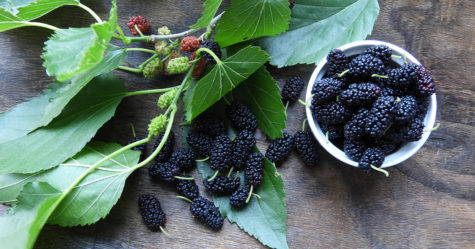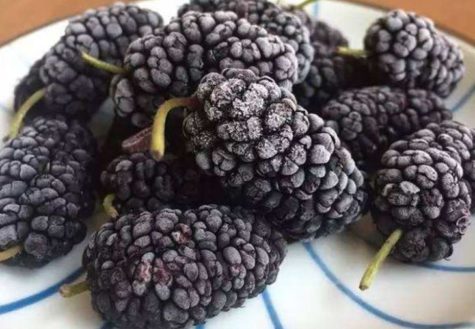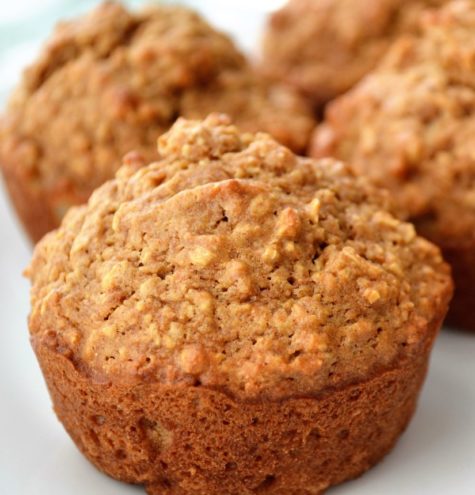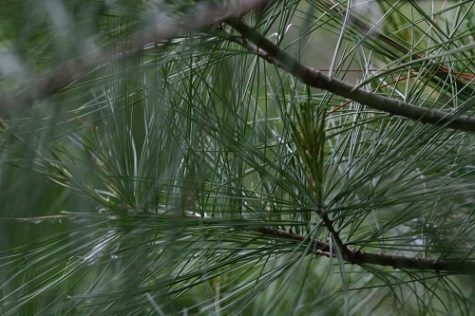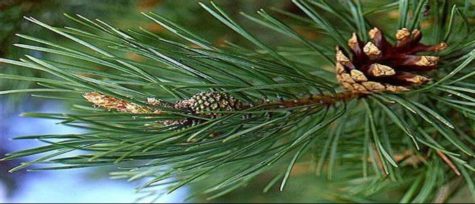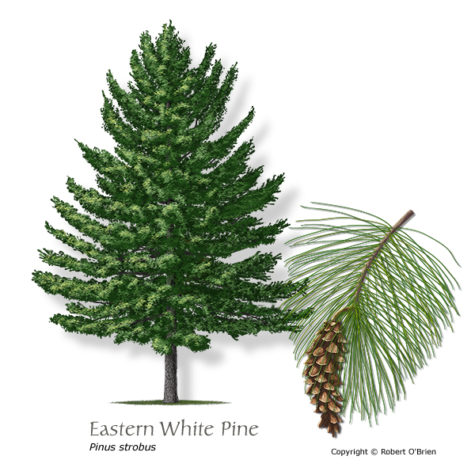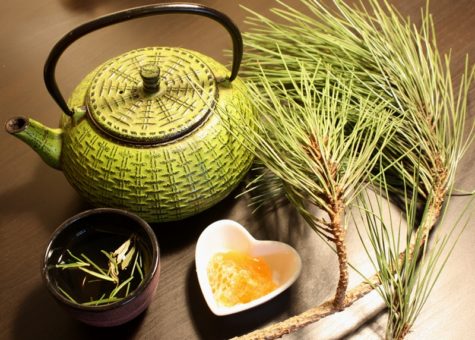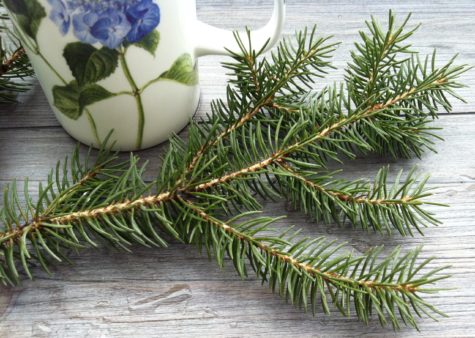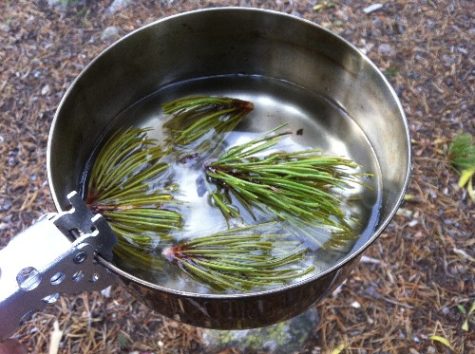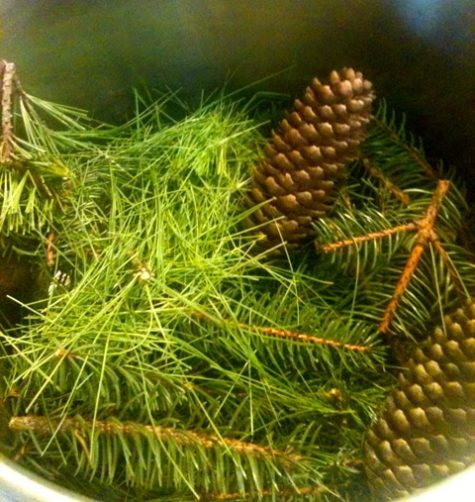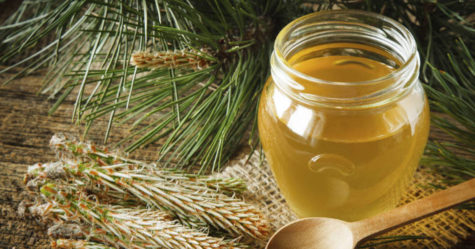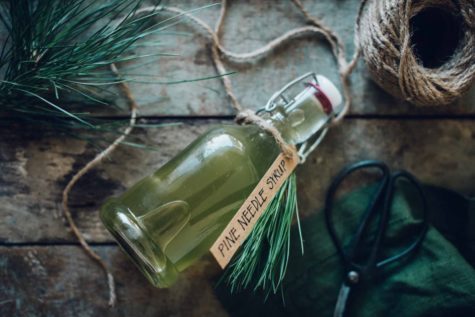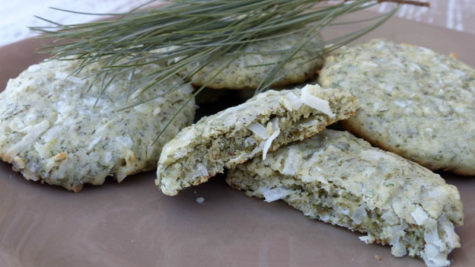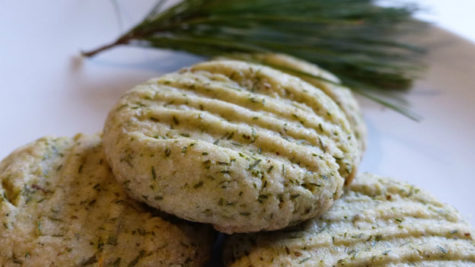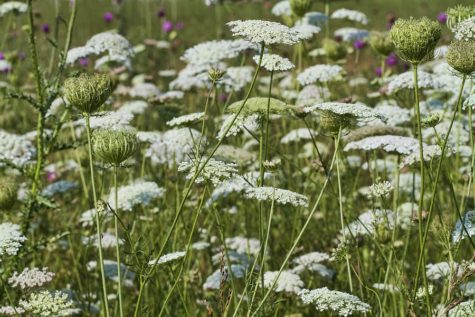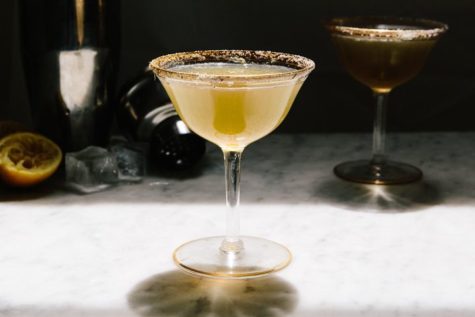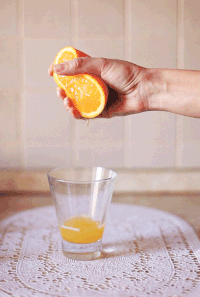Wild and Foraged Foods
Mulberries Are Good For You
Mulberries are very high in antioxidants. They also contain large amounts of vitamin C as well as Vitamin K, Vitamin A, Vitamin E, really high levels of Iron, and Dietary Fiber and are high in minerals like potassium, manganese, and magnesium and contain the B vitamins, B6, Niacin, Riboflavin, and Folic Acid. Mulberries contain flavinoids and phyto-nutrients and are extremely high in anthocyanins.
A 3 1/2-ounce serving of raw Mulberries has 43 calories, can provide up to 44 percent of your daily value of vitamin C, and 14 percent of your iron needs. The fruit and leaves are sold in various forms as nutritional supplements. The mature plant contains significant amounts of resveratrol, particularly in the stem bark, which some speculate can lead to longevity.
- Improve Digestive Health
Mulberries are a boon for your stomach. They relieve constipation and are also an excellent way to lose weight. Mulberries contain a good amount of dietary fiber. Your body needs dietary fiber to facilitate proper digestion. It does so by bulking up a stool in the stomach and facilitating the movement of food through the digestive tract. This process helps in relieving constipation, bloating, and stomach cramps.
Healthy digestion helps in efficiently maintaining optimum weight. A research was conducted by Italy’s F. De Ritis Institute and the Catholic University of Sacred Heart to determine the weight loss capacity of Mulberries. It was found out that those who consumed Mulberries as part of a balanced diet plan of 1300 calories decreased to about 10% of their total body weight in nearly three months.
The researchers also noticed that the group which consumed Mulberries reduced drastically in the waist and thigh regions. So, all you people who want a slender waist and toned thighs, you know what to eat.
- Lower Cholesterol
Eating Mulberries is a good way to lower the levels of bad cholesterol in your body, which in turn helps in preventing cardiovascular problems.
- Control Blood Sugar Levels
White Mulberries, in particular, help in keeping a check on the sugar levels of the body. Certain chemicals present in white Mulberries are similar to the medicine used to treat type 2 diabetes.
These compounds in white Mulberry help in keeping the sugar levels of the body at an optimum range by slowly breaking down the sugars in the gut and allowing them to be absorbed slowly into the blood.
- Reduce Cancer Risk
If you are looking to protect yourself from cancer, then Mulberry is what you should be looking for. Mulberries are rich in antioxidants and phytonutrients that help in stopping the growth and spread of tumor cells and protect you from cancer.
Mulberries are full of anthocyanins that help in keeping cancer cells at bay. They also contain resveratrol, which has anti-cancer properties. Resveratrol cancer inhibiting properties help in fighting colon cancer, skin cancer, prostate cancer, and thyroid.
- Improve Blood Circulation
Mulberries improve blood flow through the body, control blood pressure, and cleanse the blood. The antioxidants present in Mulberries help in improving the function of the blood vessels by keeping them supple and dilated, which leads to blood pressure control as there is a free flow of blood from the heart to other parts of the body. Mulberries encourage the production of red blood cells as they are rich in iron.
Mulberries contain polyphenols that keep the blood vessels healthy. They also contain potassium, which lowers the blood pressure.
Mulberries have been used as a remedy for blood health since ages. Ancient Chinese medicine incorporated them in their blood tonics that were used to cleanse the blood and increase its production.
- Cure Anemia
Mulberries are great for curing anemia as they are rich in iron. They also cure the symptoms of anemia such as fatigue and dizziness.
- Better Heart Health
The fiber, antioxidants, and flavonoid content of Mulberries facilitate heart health. They help in maintaining a consistent flow of blood, thus preventing heart attacks and strokes. Mulberries are rich in polyphenols, which are considered healthy for the heart.
- Good For Vision
Like carrots, Mulberries too are good for your eyes. They improve your vision and protect your eyes from free radicals that are a cause of retinal degeneration and loss in eye sight. Mulberries contain zeaxanthin, which helps in reducing oxidative stress in the cells that form your eyes. The carotenoids present in Mulberries assist in preventing cataracts and macular degeneration.
- Promote Brain Health
Research suggests that Mulberries age-proof the brain, keeping it young and alert. They also provide the calcium needs of the brain, hence keeping it hale and healthy. Mulberry also makes for an excellent treatment to keep Alzheimer’s at bay.
- Improve Immunity
Mulberries help in improving the immune system by activating the macrophages through the alkaloids present in them. Macrophages keep the immune system alert at all times. Mulberries also contain Vitamin C, which is another immunity strengthening element.
- Build Bone Tissue
Mulberries contain Vitamin K, calcium, and iron, which is the best combination of nutrients to maintain and build strong bone tissues and bones. These nutrients help the bones reverse the signs of bone degradation and prevent bone disorders such as osteoporosis, arthritis, etc.
- Rich Source Of Antioxidants
Mulberries contain an abundance of antioxidants. They contain a high concentration of the powerful antioxidant resveratrol, which is a natural antibiotic and helps in reducing heart risks. It also keeps a check on the blood pressure.
- Prevent Flu And Cold
Flu and cold are a menace. Don’t you agree? Well, eating Mulberries could solve that problem for you. The white Mulberry fruit, in particular, has been used in folk remedies for cold. White Mulberries are considered to be an astringent, bactericide and tonic and work correctly to prevent and treat flu and cold. They also contain Vitamin C and flavonoids, which prevent cold and flu.
- Improve Liver Health
Mulberries can be used to make a blood tonic, because when consumed, they nourish and purify the blood in the liver. Mulberries have the ability to strengthen the liver, and also contain iron that works well to maintain the liver health.
- Are An Anti-Inflammatory Agent
The presence of resveratrol in Mulberries induce anti-inflammatory properties in it. Mulberries also contain anthocyanins that help in preventing inflammation. Mulberries are sometimes even used as a natural alternative to allopathic anti-inflammatory drugs.
- Effective Anti-Aging Agent
Mulberries have the ability to make you look young and fresh. They contain resveratrol, which protects the skin from harmful UV rays.
Mulberries are abundant in antioxidants, which are great anti-aging agents. They keep your skin blooming and free of wrinkles. The antioxidants in Mulberries such as beta-carotene neutralize the free radicals that damage skin and cause fine lines.
Mulberries also provide vitamins A, C and E, lack of which leads to wrinkles.
- Clear Out Dark Spots And Blemishes
The antioxidants in Mulberries prevent the occurrence of blemishes on the skin. Mulberries help regulate the melanin synthesis in your skin, which naturally clears off the dark spots. They contain antioxidants that moisturize, unclog pores, and remove toxins from your skin, keeping it fresh and vibrant. Mulberries effectively even out your skin and make it look naturally beautiful and healthy.
- Treat Dry And Sensitive Skin
Lack of Vitamins A and E cause dry skin. Mulberries are rich in those vitamins, and help in treating dry and delicate skin. They hydrate your skin from within. Mulberry root extracts soothe irritated skin.
- Make Skin Soft And Radiant
You can simply sit and eat a bowl of Mulberries every day to get soft and radiant skin because they are rich in minerals that provide elasticity, flexibility, and nourishment to the skin.
- Promote Hair Growth
The presence of antioxidants in Mulberries help in keeping your hair healthy, promote hair growth, and prevent breakage.
- Help In the Retention Of Natural Hair Color
Mulberries, in combination with some traditional Chinese herbs, can help in preventing early hair graying. The nutrients in Mulberries such as calcium, iron, Vitamin C, and B play a vital role in doing so.
Practical Uses
The ripe fruit is a great snack for humans, right off the tree. Mulberries are extremely juicy and have a refreshing, subacid, saccharine taste, but they do not have the fine aroma that distinguishes many fruits.
Of all the berries that exist, Mulberries have the highest content of antioxidants, making them healthy no matter how you prepare them.
Here are some Mulberry recipes:
- Mulberry Syrup
- Old Fashioned Mulberry Jam
- Simple Mulberry Jam
- An Easy Mulberry Sorbet
- A Nice Mulberry Sorbet
- Mulberry Wine
These blackberry-like morsels provide 60 calories per cup, with 85 percent of your daily requirement of Vitamin C and 14 percent of your daily Iron. Make sure they are ripe and sweet, because under-ripe Mulberries can lead to serious reactions like vomiting, diarrhea, and hallucinations.
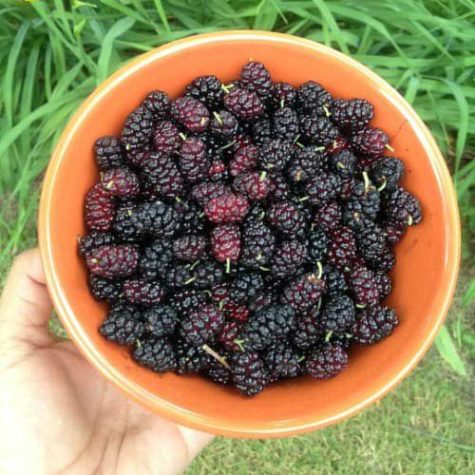
Collecting and Conserving
For all their deliciousness, Mulberries are delicate, perishable, labor-intensive to pick, and don’t all ripen at the same time. All of these factors contribute to the difficulty of commercially growing and harvesting these berries. They aren’t the kind of berry you’ll typically find in the grocery store, unless it’s a local specialty or gourmet outlet.
When they are ripe, you can harvest them by hand if you are lucky enough to have a tree. Place a tarp underneath the tree and gently shake the branches to loosen the ripe fruit. Some may come off, some may stay; they don’t all ripen at the same time, and some that are ripe may need a little coaxing off their stems.
The berries are very delicate and therefore need to be handled carefully so that they don’t break open – the stain won’t wash out.
Dried Mulberries are often sold at health food stores or natural, organic grocery chains, sometimes in the bulk section. They can also be purchased online in bulk.
- Storage
If you can manage not to eat them all, they’ll keep in the fridge for two to three days, unwashed, and in a covered container.
As the saying goes, when life gives you lemons, you make lemonade. And when Mulberry trees produce more fruit than you can consume, or perhaps you get lucky and score a surplus through your own devices (friends with trees, maybe?), you make jam. But there’s only so much you can make.
Here are some handy ways to conserve these first fruits of summer.
- Dry Them
Cover your dehydrator trays or a few window screens with these berries and dry them to create a sweet dried snack. For best results, apply a little Fruit Fresh or a similar vitamin C powder to discourage spoiling and spike the nutritional value.
Store the dried Mulberries in a breathable container like a paper bag, cloth sack, or wooden box to keep them from sweating and subsequently molding. Never eat any moldy dehydrated foods.
- Freeze Them
These berries will keep for six months in the freezer. Pop them frozen into smoothies or prep them in a yogurt-granola parfait in the fridge, where they can defrost and their color and flavor will naturally permeate the yogurt.
Mulberries are only in season for a few weeks in late spring and early summer. The fruit is used to make pies and tarts, as well as wines and cordials. But because of the berry’s brief season, we can only enjoy their slightly tart and refreshing taste for a short amount of time—unless we can preserve them for later use.
Freezing is the easiest way to preserve Mulberries, and whether you use fresh or frozen Mulberries, the results will be delicious.
Mulberries almost always come off of the tree with a little bit of stem attached. You can leave on the stem—it will not affect the berry—or, you can take the time to remove the stem bits before freezing. No matter, follow a few steps to ensure your Mulberries are easy to use when needed.
- Wash the Mulberries
Before placing in the freezer, you need to wash the Mulberries; washing removes bacteria that could be lurking on the berries, such as salmonella, E. coli, or norovirus. Run the berries under cool water and let them drain for a few minutes in a colander.
- Single-Layer Freeze
Freezing the berries in a single layer will ensure that the berries will remain separate once they are frozen. Spread the whole, washed Mulberries in a single layer on a baking sheet or on plates. Freeze the fruit, uncovered, for at least 2 hours.
- Transfer to Freezer Containers
Once the berries are frozen, you can transfer them to freezer bags or containers. (It is recommended that you use BPA-free, non-plastic freezer containers.) Make sure to label and date the bags or containers; you can store Mulberries in the freezer for up to 6 months. They are still fine to eat after that, but their quality and flavor degrade over time.
- Ways to Use Frozen Mulberries
There are many ways you can use the frozen Mulberries, from smoothies to baked goods to jam. You can blend straight-out-of-the-freezer Mulberries with milk (or a non-dairy alternative), yogurt, and honey or another sweetener of your choice. The frozen berries will give the smoothie a thick, cold, milkshake-like texture.
You can also add still-frozen Mulberries to pancakes, muffins, and quick bread. Although the Mulberries will cook along with the rest of the ingredients, berries that start out frozen in these recipes will not bleed their color as much as fresh berries tend to do.
Frozen Mulberries are just as good as fresh for making Mulberry jam and other sweet preserve recipes. Stockpile them in the freezer during the harvest season, and get around to that jam project later when you have time.
You can use the frozen Mulberries to make sorbet or ice cream, but you will need to thaw them before you transform them into a frozen dessert. You can also thaw frozen Mulberries and puree them to make a simple, flavorful sauce to spoon over yogurt, cake, or fresh fruit. If you think the sauce needs it, add a little honey or sugar and a small squeeze of lemon juice to intensify the Mulberry flavor.
Source: Encyclopedia of Herbology
Oatmeal Pine Muffins
- 1 1/3 cups flour of your choice
- 1 cup quick cooking rolled oats
- 1/4 cup brown sugar
- 1/2 cup raisins
- 3 tbsp (heaping) pine powder
- 1 tbsp baking powder
- 1 egg
- 1 cup milk
- 2 tbsp melted butter
Instructions
If you are unfamiliar with pine powder, it’s very simple to make, here’s a link: Pine Powder.
Preheat oven to 375 degrees. Grease muffin tins. Combine the first 6 ingredients. Add egg, butter and milk then stir until the flour is moistened. Fill muffin cups 3/4 full. Bake 20 minutes or until an inserted knife comes out clean.
Found at: Edible Wild Food
Pine Powder
Pine needles are full of vitamin C, and have an interesting flavor. They can be powdered and added as a dry ingredient in cookie and other recipes. Here’s how:.
Collect pine needles (still on the branches) and hang them in your home to dry (choose a dry area of your home). After 2-3 weeks (depending on moisture levels in your home) remove the needles from the branches (it is OK if little bits of branches get into the needles).
Place the needles into a good quality coffee grinder or mixer and grind into powder!
Found at: Edible Wild Food
Pine Needles ~ Benefits and Nutrients
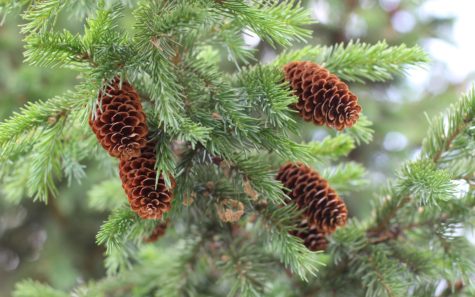
Pine needles range in size from 3 to 5 inches and are a deep forest green color. The long, thin needles vary slightly from variety to variety, depending on the region in which they grow. Pine needles have a strong pine scent, and a biting resinous flavor. In the wild Pine needles can be foraged year-round.
Foraged Pine needles can be used for a variety of applications. Pine needles are used most often for the oils and aroma within, to impart a pine scent or flavor to teas, ice creams, and liquors. Pine needles can be used like applewood or mahogany in fires to smoke meats or chicken, adding a hint of pine flavor. Place Pine needles under fish while cooking or chop like rosemary and add to marinades or brine. A variety of recipes can be found here.
Nutritional Value
It is said that Pine needles can be used as a natural remedy for up to 80% of human diseases. Pine needles are high in vitamin C; a tea made with the needles of the Pine tree has been used to stave off scurvy when no other sources of vitamin C were readily available. In a tincture or tea, Pine needles can help alleviate congestion and other respiratory problems. Components in Pine needles have decongestant, disinfectant and wound healing properties.
- Vitamin C Content
Pine needles purportedly have three to five times more vitamin C than an orange, depending on what source you read, but there’s no hard and fast rule for how much C is in a pine needle.
Regardless of the exact percentage, we know that pine needles and pine bark make an excellent natural vitamin C supplement. At least they’re potent enough to cure scurvy, a chronic condition caused by vitamin C deficiency that, left untreated, results in death.
One historical account relates the 1536 story of French explorer Jacques Cartier, whose crew was cured of scurvy with a tea of pine needles and bark given to them by the Iroquois after the crew suffered months of nutritional deprivation at sea.
Even though the crew boiled the decoction, which would have destroyed a significant portion of the vitamin C, there was still enough ascorbic acid and various amino acids to completely reverse their symptoms of scurvy.
It was such a dramatic change, the tree used for tea became known as “tree of life”. There’s no way to determine exactly what species it was, but we know the tree of life was a conifer. Eastern white pine is just one of the handful of candidates that could have been used.
The ascorbic acid (vitamin C) content of pine needles seems to vary significantly depending mainly on the species of pine and the age of the needles. The Eastern white pine needles of this USDA Forest Service study had between 0.72 mg and 1.87 mg of ascorbic acid per gram of pine needles.
New needles had the lower concentration, while 1 year old needles had 1.18 mg of vitamin C per gram of needles, and 2 year old needles had as much as 1.87 mg.
According to the USDA, 100 g of orange has 53.2 mg of vitamin C, or .532 mg/g. That puts pine needles at slightly more vitamin C for new needles, twice as much for 1 year old needles, and 3.5 times as much vitamin C for 2 year old needles.
The gist of the research is that ascorbic acid content increases with the age of the needles. Does that mean older needles are best for pine needle tea? Not if you’re after taste. Older needles make a stronger, bitter, more piney tasting tea, so if you want a milder, more delicate tea, look for brighter green young pine needles.
And don’t boil them. Boiling not only destroys vitamin C, but it also releases more terpenes–the organic compounds that make pine smell like pine–making more of a turpentine-like tea.
Other research indicates that balsam fir needles have significantly more vitamin C than white pine, so species matters, and the bark of white pine has more than needles. If you want a more potent brew of vitamin C, throw in some pine bark, although I can’t vouch for flavor, since I’ve never tried it.
Although there are several species of pine that make suitable tea, Eastern white pine (Pinus strobus) is one of the trees more commonly associated with pine needle tea, probably for its superior flavor.
Health Benefits of Pine
There have been a number of studies done on the nutritional qualities and healing powers of pine needles and bark. Here are just a few:
- Cancer prevention
(Antioxidant, antimutagenic, and antitumor effects of pine needles (Pinus desiflora)):
“These results demonstrate that pine needles exhibit strong antioxidant, antimutagenic, and antiproliferative effects on cancer cells and also antitumor effects in vivo and point to their potential usefulness in cancer prevention.”
- Cardiovascular health, antioxidant, immune function
(Comparison of methods for proanthocyanidin extraction from pine (densiflora) needles and biological activities of the extract):
“Flavonoids are known to be effective scavengers of free radicals. In particular, proanthocyanidins are flavonoids that possess cardiovascular protection, antioxidative activities, and immunomodulatory activities…In this study, we discerned an efficient extraction method to achieve relatively pure proanthocyanidins from pine needles and evaluated the biological functions of the resulting extract, which could potentially be used for its efficacious components in functional food products.”
- Potential treatment for anxiety, depression, and dementia
(Effect of new polyprenol drug ropren on anxiety-depressive-like behavior in rats with experimental Alzheimer disease):
“The obtained results…indicate that Ropren [a trademarked preparation based on extract of spruce and pine needles] is potentially active in the management of affective impairments in the experimental model under consideration. It also has a profound beneficial effect on the anxiety and depressive-like behavior in rats with model Alzheimer’s type dementia, and thus may prove to be a novel natural treatment.”
Dangers and Cautions:
Avoid pines that aren’t really pines. These include Yew pine (Podocarpus macrophylla) and Norfolk Island pine (Araucana heterophylla). And stay away from the highly toxic yew (genus Taxus).
Most sources warn of the potential dangers of pines like Ponderosa pine (Pinus ponderosa) and Lodgepole Pine (Pinus contorta), citing the possibility of abortion from drinking tea made with these species. And some sources say all pines could potentially cause abortion.
According to Green Deane Jordan of EatTheWeeds, pine needle tea drunk in moderation shouldn’t cause any problems unless you’re allergic to pine:
“The basis for this rumor is a veterinary study decades ago. If you are a cow and you eat many pounds of Ponderosa Pine needles you have a 5 to 8 percent chance out of 100 of having an abortion or still-birth. If you boil a huge amount of pine needles in water for hours down to a small amount of gross liquid and you drink it, then maybe it would cause an abortion. A few of needles soaked in hot water is no threat to anyone except for possible allergies.”
If you’re worried about it, stick with tried and true Eastern white pine, and of course exercise moderation.
Sources:
Pine Needle Tea
Pine needle tea has been prized for thousands of years for its many health benefits. What’s so good about pine needle tea? Here’s what I found out at Forest Holidays:
- Pine needle tea has a pleasant taste and smell (always a good start).
- It is rich in vitamin C (5 times the concentration of vitamin C found in lemons) and can bring relief to conditions such as heart disease, varicose veins, skin complaints and fatigue
- Vitamin C is also an immune system booster which means that pine needle tea can help to fight illness and infections.
- Pine needle tea also contains high levels of Vitamin A, which is good for your eyesight, improves hair and skin regeneration and improves red blood cell production.
- It can be used as an expectorant for coughs and to help relieve chest congestion; it is also good for sore throats.
- It brings you clarity and mental clearness.
- It can help with depression, obesity, allergies and high blood pressure.
- Pine needles contain antioxidants. These reduce free radicals, which are harmful to humans and can cause disease.
- Taoist priests drank pine needle tea as they believed it made them live longer. There is researched evidence that pine needle tea can help to slow the ageing process.
- Pick some pine needles and let them soak in boiling water on your stove and it will add a crisp pine smell all over the house. Perfect for Christmas.
How to make pine needle tea
- 1/2 cup young, bright green Eastern white pine needles
- 3 cups water
Instructions:
Bring water to a boil in a stainless steel pan. Add pine needles to water and reduce heat. Simmer for 20 minutes and remove from heat. Cover and let sit overnight or continue to next step and serve.
Strain out pine needles, sweeten to taste, and serve tea hot or cold.
Notes:
Make sure not to boil the pine needles in order to preserve the vitamin C and prevent the release of bitter terpenes. Vitamin C doesn’t last long, so drink this tea as soon as possible.
Pine Needle Tea In The Wild:
- Collect pine needles
- Build a fire
- Light it
- Boil water in a mess tin
- Add pine needles and let them infuse in the boiling water
- Sieve and serve
Enjoy your tea. Who knows, you might live to be 103 with 20:20 vision, a mind as sharp as a pine needle and no varicose veins. We’ll drink to that!
A word or two of caution:
Firstly, don’t try pine needle tea if you are pregnant. Secondly, most pine varieties can be used, but steer clear of Yew and Cypress which can sometimes be mistaken for pine. A good rule of thumb is to avoid flat needles. If in doubt, ask a Forest Ranger.
Found at: Forest Holidays
Evergreen Syrup
Spruce tip syrup used to be quite popular back in the day. It was used throughout Europe and by the pioneers in North America. Since Spruce tips grow in the spring, this syrup would have been a seasonal type of medicine. I generally make my evergreen syrup using needles and cones as these parts of the plant are most readily available, and have medicinal value as well.
Energetically, evergreens are super appropriate to use as medicine throughout the winter. Although most of the trees have lost their leaves by now, evergreens remain green, showing us that nature lives all year long. Evergreens are also helpful with the particular ailments that abound during the cold and dark season.
For the following recipe, I harvested from Norway spruce (Picea abies) and White pine (Pinus alba). Not the time of year for the tips so I used needles, twigs, cones. It turned out quite delightful with a predominantly sweet taste and evergreen-almost citrus undertones.
Evergreen Syrup Recipe:
- White pine needles, some twig ~2 oz weight (other pine species can be used)
- Spruce needles, 2 cones ~2 oz weight (other spruce species can be used)
- Filtered water to cover
- Honey- half of the amount of decoction that remains (a 1:2 ratio honey:decoction)
- Water added to evergreens
The weights are listed because I had them handy, however there is no set amount – it all depends on how much syrup you want to make. Put the plant material in a pot and cover with water. Bring this to a boil and then lower to simmer until the liquid is halved. I used a spoon as a measuring stick. You can also have a measuring cup handy to pour the liquid back and forth until it measures half of water added.
Reducing the decoction to half of the original liquid took almost ten hours. The liquid is then strained out, put back in the pot without the needles, and then the honey is added. The amount of honey to add is equal to half the amount of concentrate, so 8 ounces of concentrate would require 4 ounces of honey, or a 2:1 ratio. Warm and stir the mixture, and the syrup is done!
Medicinal Uses for the Syrup
Tree medicine is very powerful when grounding is needed. It fosters opening up to old wisdom, and letting oneself be cared for by the Earth. The evergreen forest is quiet, and feels limitless and mysterious. Evergreen syrup is good medicine for reflecting, meditating, and otherwise conjuring up introspective energy.
Decomposition of evergreen needles lowers the surrounding soil pH to provide a particularly acidic environment, a fact that I find interesting and relevant to its use as an antiseptic.
In Europe, pine products have been used as medicine since the Middle Ages, and their medicinal properties are pretty uniform across the Pinus genus. It acts as a stimulating antiseptic for respiratory infections and stuck mucus, and is useful for bronchitis, and at onset of colds and flu to stop infection. Pine is also used for coughs and asthma.
Spruce is useful to cut phlegm in the throat and lungs, and for opening air passages. It is high in vitamin C content, and can also be helpful for bladder conditions and in cases of leucorrhea.
Overall, Spruce and Pine syrup is great medicine to have on hand during the winter and early spring season. It can be used for acute illness, and as a winter tonic to provide a bit of sunshine in the form of a local source of vitamin C.
Evergreen syrup is also really tasty, making it an easy medicine to work with as it can be added to hot water, porridge, pancakes, or taken straight.
From: Herb Geek
Coconut Pine Cookies
Boreal forest meets tropical fruit in a shortbread cookie.
Ingredients
- 3 cups unbleached flour
- 1 cup organic cane sugar
- 1/4 cup shredded sweetened coconut
- 10 tbsp pine powder
- 1/2 cup melted butter
- 3 eggs
- 1 tsp vanilla
Instructions
If you are unfamiliar with pine powder, it’s very simple to make, here’s a link: Pine Powder.
Place all dry ingredients into a bowl. In another bowl blend together melted butter, eggs, and vanilla. Mix the wet ingredients into the dry ingredients and blend well.
Roll cookie dough into balls about 3/4 the size of a golf ball and place on ungreased cookie sheet. Use a fork to flatten the cookies until they are about 1/4” thick.
Bake at 350°F for about 10-12 minutes. Makes about 5-6 dozen.
Found at: Edible Wild Food
Pine Cookies
Pine needle cookies that taste great. No pine nuts are used in this recipe.
Ingredients:
- 3 cups unbleached flour
- 1 1/2 cups organic cane sugar
- 8 tbsp white or red pine powder
- 1/2 cup melted butter
- 3 eggs
- 1 tsp vanilla
Instructions:
If you are unfamiliar with pine powder, it’s very simple to make, here’s a link: Pine Powder.
Place all dry ingredients into a bowl. In another bowl blend together melted butter, eggs, and vanilla. Combine the wet ingredients into the dry ingredients and blend well.
Roll cookie dough into balls about 3/4 the size of a golf ball and place on ungreased cookie sheet. Use a fork to flatten the cookies until they are about 1/4” thick.
Bake at 325°F for about 10-12 minutes.
Makes about 5-6 dozen.
Found at: Edible Wild Food
Queen Anne’s Lace Jelly
- 18 large Queen Anne’s lace heads
- 4 Cups water
- ¼ Cup lemon juice (fresh or bottled)
- 1 Package powdered pectin
- 3 ½ Cups + 2 Tbsp. sugar
Bring water to boil. Remove from heat. Add flower heads (push them down into the water). Cover and steep 30 minutes. Strain.
Measure 3 cups of liquid into a 4 – 6 quart pan. Add lemon juice and pectin. Bring to a rolling boil stirring constantly. Add sugar and stir constantly. Cook and stir until mixture comes to a rolling boil. Boil one minute longer, and then remove from heat.
Add color (pink) if desired. Skim. Pour into jars leaving ¼” head space. Then process in a hot water bath for 5 minutes.
Makes about 6 jars
Important Notice:
Historically, Queen Anne’s lace was used for medicinal and contraceptive purposes. Avoid it if you are pregnant, and check with your doctor if you are currently taking medications. More information about this wild herb can be found here: Encyclopedia of Herbology – Wild Carrot
The carrot family contains a number of poisonous look-alikes, most notably poison hemlock. Once the fruit has formed, it is easy to tell them apart, but less so when the plants still only have leaves.
When foraging, always choose high-quality landscapes (not next to the highway or on post-industrial or sprayed sites), and make sure to obtain permission if it is not your own yard. If possible, go out with an experienced forager.
Found at: Herbal Riot
Queen Anne’s Lace Cognac Apéritif
On late-summer evenings, I take the chill off with a cognac apéritif, the rim of the glass dipped in spicy Queen Anne’s Lace.
For the rim:
- 3 tablespoons dried Queen Anne’s Lace fruits
- 1 1/2 tablespoons fine sugar
Crush the dried Queen Anne’s Lace fruits with the sugar and mix thoroughly. (To save effort for multiple drinks, we made a larger batch with the same 2:1 ratio.) Spread the mixture on a saucer or plate that is larger than the diameter of the glass rim. Moisten the rim of the glass by dipping it upside down in a shallow bowl of water and let the excess water drip off for a few seconds. Dip the moistened rim in the Queen Anne’s Lace/sugar mixture, pressing down firmly. The mixture should cling to the rim where moistened. Gently shake off any excess.
Note: Instructions on collecting the Queen Anne’s Lace fruits can be found here: Queen Anne’s Lace
For the drink:
- 2 ounces cognac (I suggest Pierre Ferrant 1840)
- 3/4 ounce fresh Meyer lemon juice or bergamot juice
- 3/4 ounce honey syrup (equal parts honey and hot water)
- 1 teaspoon dried Queen Anne’s Lace fruit
In a cocktail shaker, combine cognac, lemon juice syrup, and ice. Shake vigorously for half a minute or until chilled. Pour the mixture through a strainer (to remove the Queen Anne’s Lace bits) and into the rimmed glass. Serve immediately.
Makes 1
Important Notice:
Historically, Queen Anne’s lace was used for medicinal and contraceptive purposes. Avoid it if you are pregnant, and check with your doctor if you are currently taking medications. More information about this wild herb can be found here: Encyclopedia of Herbology – Wild Carrot
The carrot family contains a number of poisonous look-alikes, most notably poison hemlock. Once the fruit has formed, it is easy to tell them apart, but less so when the plants still only have leaves.
When foraging, always choose high-quality landscapes (not next to the highway or on post-industrial or sprayed sites), and make sure to obtain permission if it is not your own yard. If possible, go out with an experienced forager.
Found at: Food 52
